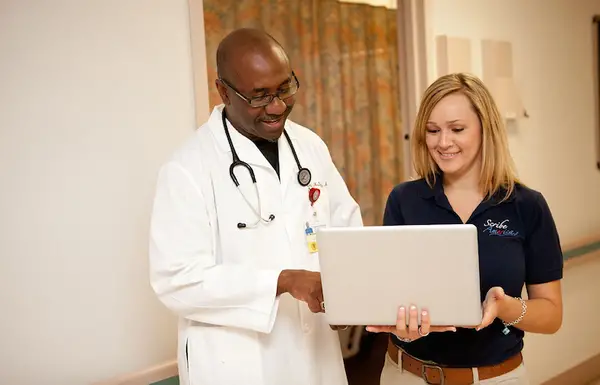
What Does a Day in the Life of a Medical Scribe Look Like?
Starting a new career is exciting; amidst wondering what the implications of the new role could have for your future career progressions or even, more cynically, your bank balance, it’s easy to be oblivious to what the everyday nature of the job entails.
While having direction and purpose in your career is important, looking too far into the future can be counterproductive. Before starting any career, you should assess whether the proposed day-to-day tasks and work-life balance are something that you’d feel comfortable performing within.
This is particularly important within the medical industry. While a passion for helping patients and scientific intrigue is essential for a successful career within the healthcare industry, an aspiring medical professional must be prepared for the long hours and high-pressure situations that are synonymous with such jobs.
Medical scribes are often considered entry-level jobs in the healthcare industry and give aspiring medical workers their first taste of what working in a professional context will be like. However, they require a lot of expertise and training to do the job to the standards required of the industry.
So, if you want to become a medical scribe, let’s undertake a quick overview of the tasks you’ll be expected to perform daily within the job.
What is a Medical Scribe?
A medical scribe performs as an assistant to senior healthcare providers. Fundamentally, their role is to take the burden of paperwork and documentation away from a physician or clinician enabling them to focus entirely on patient care experience.
Medical scribes work instantaneously to accurately relay information about patient visits, including symptoms, diagnoses, treatment, and any other relevant information.
Furthermore, medical scribes may also assist with administrative tasks such as scheduling appointments, managing referrals, and coordinating laboratory or imaging tests.
The role is usually performed in person, though there are options available for remote working.
4 Ways a Medical Scribe Will Spend Their Time at Work
As typical in the 24/7 healthcare environment, the working pattern of a medical scribe can be highly variable. Some medical scribes will be asked to work on nightshifts and weekends, but typically, medical scribes work 8-12 hour shifts during regular business hours.
Preparing for Patient Meetings
Most medical scribes can expect to start work relatively early in the morning. The first hours of the day prior to patient encounters will consist of reviewing the daily schedule and upcoming, gaining a deeper insight into the patients who will be seen during today’s shift.
Taking Notes During Patient Meetings
With medical scribes responsible for documenting all the details of patient-healthcare provider encounters, it’s essential that the scribe has done adequate preparation for the day and is feeling alert and comfortable heading into the initial meetings with patients.
The medical scribe will be silently present during the senior healthcare providers' meetings with patients, updating electronic health records, completing documentation tasks, and providing a transcript of critical conversations between the patient and the healthcare provider.
Mid-way or at the end of a meeting, a senior healthcare provider may turn to the medical scribe and relay further observations about the patient that they feel need noting down. A successful medical scribe has a strong relationship with the senior healthcare provider, enabling a solid two-way stream of communication.
To ensure documentation is accurate and correctly conveys what the healthcare provider is suggesting, it’s important for the scribe to have a thorough understanding of medical terminology and review their notes quickly for errors, typos, and any potential misunderstandings.
Upon completion of notes, a medical scribe passes the notes on to the senior healthcare provider, who can undergo a further review and make any necessary amendments. It is imperative for both the patient and healthcare organization that notes are completely accurate to improve care and remove the risk of misinformation, and any potential legal suits that could come with this.
A medical scribe and senior healthcare provider will then repeat this process for every patient throughout the day.
Recharging on Breaks
Medical scribes typically do get breaks. However, the frequency and duration of breaks may vary depending on factors such as the policies of the healthcare facility, the length of the scribe's shift, and the workload during that day.
In most cases, medical scribes are entitled to breaks in accordance with labour laws and regulations. These breaks are essential for maintaining the scribe's well-being, concentration, and productivity throughout their shift. Breaks provide opportunities for rest, refreshment, and mealtime, allowing scribes to recharge and stay focused during their duties.
The specific break schedule for medical scribes may vary. Some facilities may offer short breaks (e.g., 10-15 minutes) during each shift segment, while others may provide longer breaks (e.g., 30 minutes to an hour) for meals. Scribes may also have the flexibility to take additional short breaks as needed, depending on workload and staffing levels.
Completing any Other Duties
Before concluding work for the day, a medical scribe might be asked to undertake a series of other tasks, including scheduling patient appointments, participating in quality assurance training, and assisting with the training of new scribes.
Once any outstanding tasks are completed, a medical scribe is free to go home.